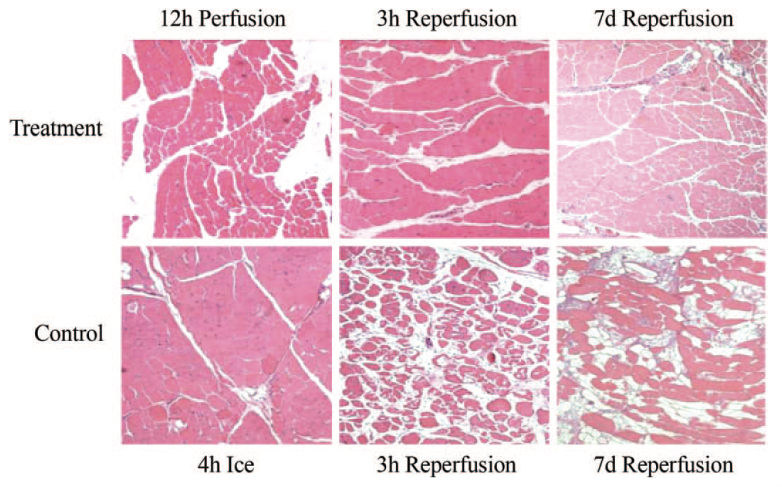Acellular Hypothermic Extracorporeal Perfusion Extends Allowable Ischemia Time in a Porcine Whole Limb Replantation Model
Abstract
Background: One of the major challenges in traumatic amputation is the need to keep ischemia time brief (4 to 6 hours) to avoid ischemic damage and enable successful replantation. The current inability to meet this challenge often leads to traumatic limb loss, which has a considerable detrimental impact on the quality of life of patients. Methods: The authors’ team built a portable extracorporeal membrane oxygenator device for the perfusion of amputated extremities with oxygenated acellular solution under controlled parameters. The authors amputated forelimbs of Yorkshire pigs, perfused them ex vivo with acellular Perfadex solution for 12 hours at 10°C in their device, and subsequently replanted them into the host animal. The authors used limbs stored on ice slurry for 4 hours before replantation as their control group. Results: Clinical observation and histopathologic evaluation both demonstrated that there was less morbidity and less tissue damage to the cells during preservation and after replantation in the perfusion group compared with the standard of care. Significant differences in blood markers of muscle damage and tissue cytokine levels underscored these findings. Conclusions: The authors demonstrated the feasibility and superiority of ex vivo hypothermic oxygenated machine perfusion for preservation of amputated limbs over conventional static cold storage and herewith a substantial extension of the allowable ischemia time for replantation after traumatic amputation. This approach could also be applied to the field of transplantation, expanding the potential pool of viable donor vascularized composite allografts.
Authors
Kueckelhaus M1, Dermietzel A, Alhefzi M, Aycart MA, Fischer S, Krezdorn N, Wo L, Maarouf OH, Riella LV, Abdi R, Bueno EM, Pomahac B.
Plast. Reconstr. Surg. 139: 922e, 2017
Figure
Hematoxylin and eosin stains of porcine skeletal muscle in cross-sections. The control specimens showed a gradual worsening of the muscle fibers over time compared with the perfusion group.

